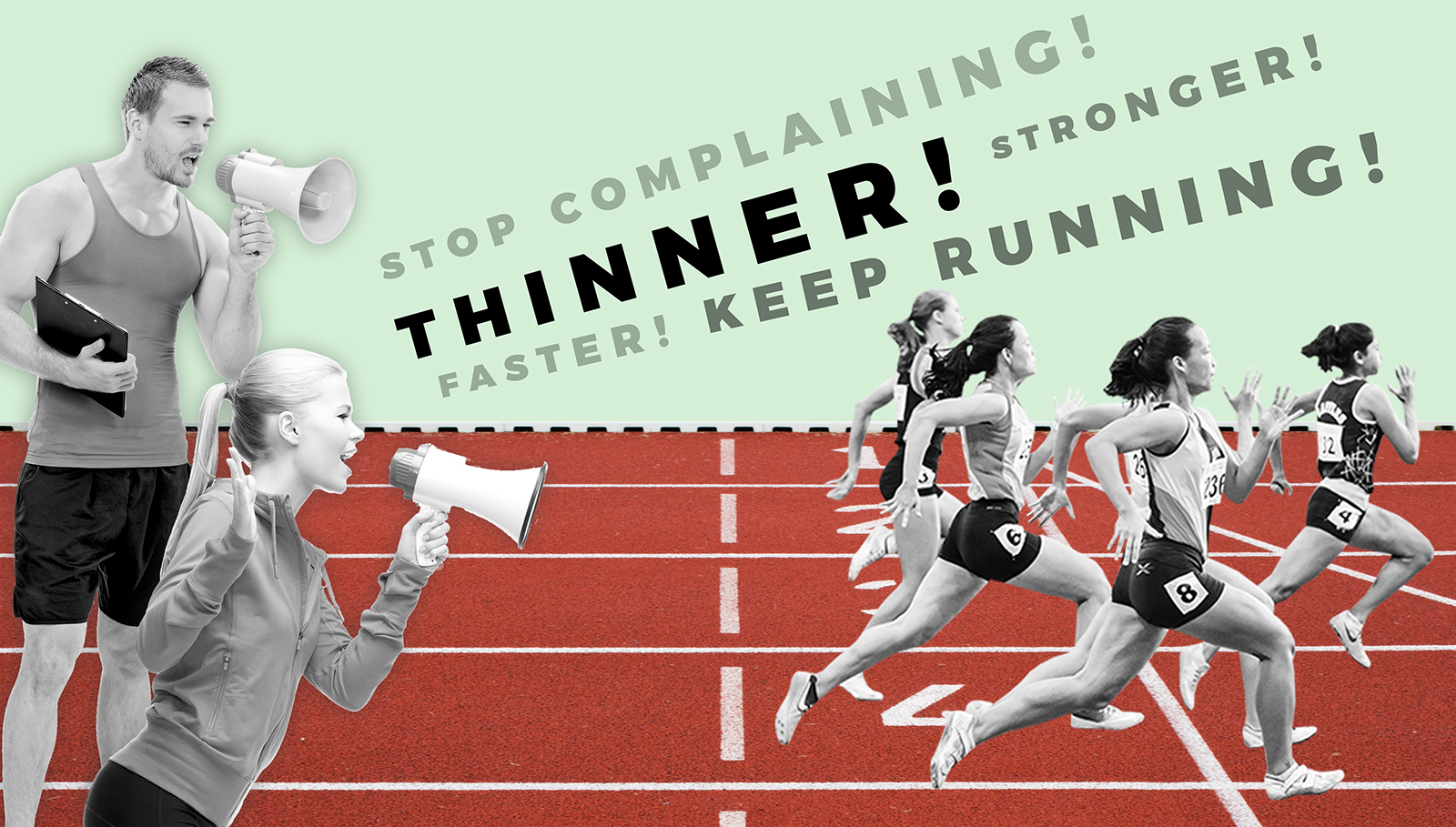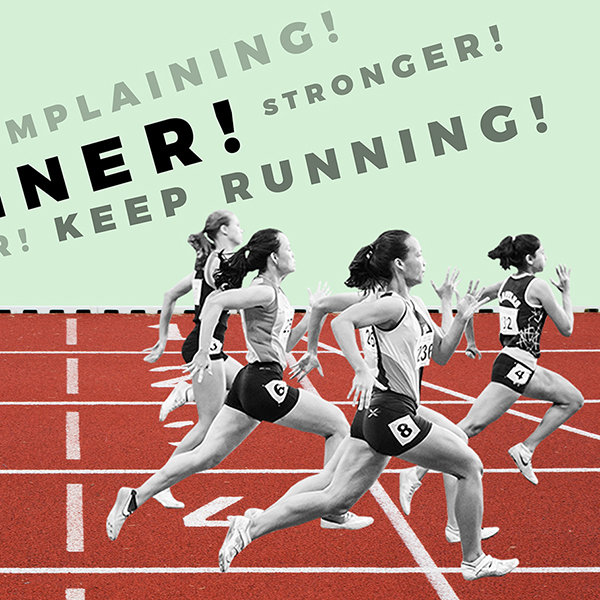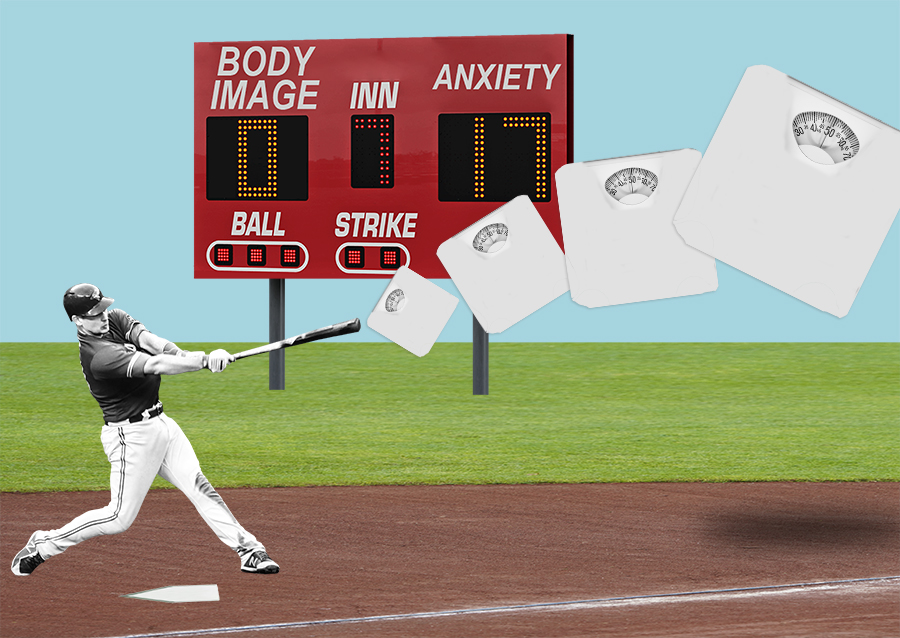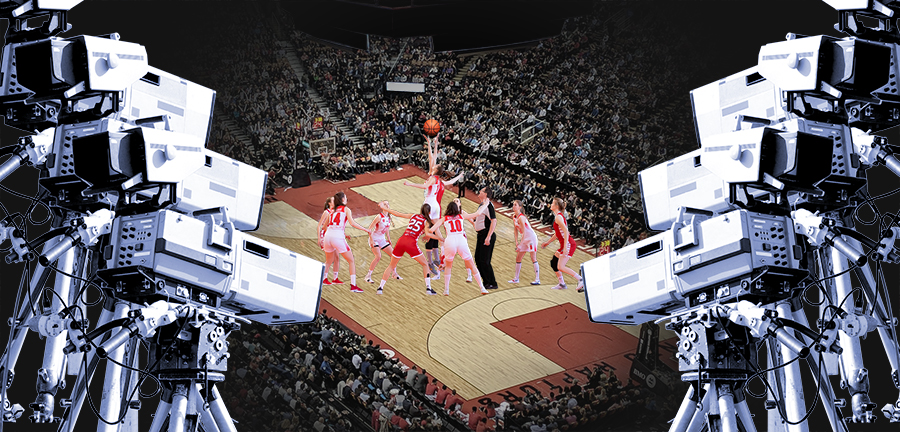As she finished her final track race of sophomore year for Wesleyan University, Yuki Hebner was pulled aside by her coach for an informal end-of-season chat. He congratulated her on a good season and told her he thought she could be an All-American — if she lost 15 pounds. Hebner, a 5 foot 2 inch 125-pound distance runner, reminded her coach that her muscular build made her fast and strong. But her coach convinced her that weight-loss offered a better strategy. She complied, losing 10 pounds in just a few weeks.
Then, she began to struggle. “Things got bad when I couldn’t lose the last five pounds,” Hebner says. “I remember being really disappointed with myself. I remember being like, ‘Why can’t you do this?’”
That summer, Hebner lied about missing meals to both her family and her friends, telling each that she was eating with the other and then not eating at all. When she returned to campus and meals became unavoidable group activities with teammates in the dining hall, she began purging after dinner in the library’s single-use bathroom. At the start of her cross-country season junior year, she suffered a stress fracture in her femur — an injury often associated with low bone density due to malnutrition. But she believed her “excessive” weight caused the fracture — because that’s what her coach told all his athletes. Hebner also became anemic, a condition which caused such exhaustion she’d dash to friends’ dorm rooms to sleep for 15 minutes between class and practice. A pervasive feeling of sadness dogged her day after day. Her senior year, she recovered from her injury, but her running times had taken a nosedive.
Risk of Disordered Eating in Student Athletes
A 1999 study by the NCAA revealed that female athletes are very high risk of developing an eating disorder. While male athletes are at a lower risk, they are still in danger of disordered eating habits.
“I was running horribly, and I felt horribly about myself,” Hebner says. “I didn’t quit because I loved running, and I really believed it was going to get better.”
Many collegiate student-athletes share Hebner’s experience. According to the National Eating Disorders Association, college athletes may be at a higher risk of disordered eating than non-athletes. A pair of studies conducted by researchers at the University of North Texas and University of Wisconsin-Milkwaukee found disordered eating symptoms in more than one-fourth of female athletes and one-fifth of males. In addition, a 2004 survey of more than 1,600 elite Norwegian athletes found that cases of eating disorders were much higher than among non-athletes, with rates of more than 40% among female athletes in aesthetic sports like gymnastics.
Eating disorders deliver serious physical consequences: mood swings, trouble concentrating in school, digestive problems, testosterone decreases, lack of a menstrual cycle, decreased bone density, repeated bone injuries, osteoporosis, and even heart failure, says Paula Quatromoni, chair of the department of health sciences at Boston University. In fact, anorexia nervosa, one of several eating disorders (others include bulimia nervosa and binge-eating disorder), is the most fatal mental disorder and the most challenging to treat, according to the National Institutes of Health. Student-athletes are uniquely at risk. In addition to the societal and psychological factors that impact those in the general population, athletes face sports-specific risk factors. “There’s the performance pressure, there’s the pressure of how you look in that uniform, and with cameras on you, and so much of your body being exposed,” Quatromoni says.

At Wesleyan University, distance runner Yuki Hebner remembers her coach pulling athletes aside for “fat talks” about their weight. Photo courtesy of Yuki Hebner.
A Culture That Nurtures and Hides Eating Disorders
In recent years, the ravages of eating disorders in sports have earned substantial attention. In February, Mary Cain, an elite distance runner and former high-school national record holder, told the New York Times that her coach, Alberto Salazar, had shamed her and other elite runners into losing weight, leading to depression and rampant injuries. In 2018, 13 former elite gymnasts told AP that U.S.A. Gymnastics coaches promoted extreme calorie restrictions and denigrated athletes with developing bodies, leaving many with life-long eating disorders. Athletes such as former UCLA gymnast Katelyn Ohashi, known for her viral PAC-12 floor routine, and Schuyler Bailar, a former swimmer at Harvard and the first openly trans DI athlete, have spoken publicly about their struggles with eating disorders and decried body-shaming in sports.





